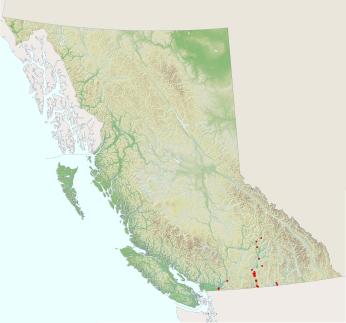Large brown-and-yellow dragonflies of rivers and wave-washed lakeshores, where the adults fly out over the water. The thorax is encircled between the wings by an oblique yellow band. Larvae sprawl on the bottom silt and sand; they have long spider-like legs and a horn-like projection between the eyes.
|
Uncommon along warm lake margins and sandy rivers. Males patrol with a swift, direct flight, low over the water, but like other large dragonflies, cruisers often feed in open areas far from water. Females lay eggs alone, striking their abdomens on the water surface. Both sexes perch vertically on vegetation.
|
|
